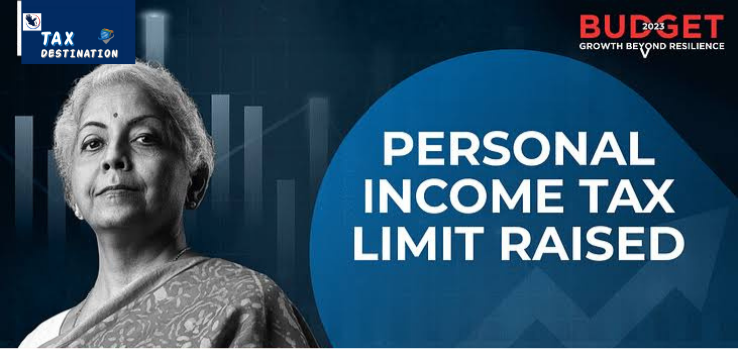Detailed analysis of Proposed changes in Income Tax in Unionbudget2023
Hello Everyone, Budget was announced yesterday. However, to understand the new rates and changes, we must have information about existing rates and limits. So in this article we will see what was existing law and what changes have come. Let's get started.
Presumptive Taxation
Micro enterprises with turnover up to 2 crore and certain professionals with turnover of up to 50 lakh can avail the benefit of presumptive taxation as per the current law. In the budget 2023, it is proposed to provide enhanced limits of 3 crore and 75 lakh respectively, to the tax payers whose cash receipts are no more than 5 per cent.
Cooperation
New co-operatives that commence manufacturing activities till 31.3.2024 shall get the benefit of a lower tax rate of 15 per cent, as is presently available to new manufacturing companies.
Start-Ups
Extension of date of incorporation for eligible start up for exemption. Certain start-ups are eligible for some tax benefit if they are incorporated before 1st April, 2023. The period of incorporation of such eligible start-ups is proposed to be extended by one year to before 1st April, 2024.
Tax Rebate
Resident individuals with total income up to 5,00,000 do not pay any tax due to rebate under both old and new regime. It is proposed to increase the rebate for the resident individual under the new regime so that they do not pay tax if their total income is up to 7,00,000. However, if your income is single rupee more than 7,00,000, then you must pay tax on entire income without considering any deductions.
Slab Rate
In the budget 2023, it was proposed to change the tax structure in the new tax regime by reducing the number of slabs to five and increasing the tax exemption limit to 3 lakh. The new tax rates are:
0-3 lakh - Nil
3-6 lakh - 5%
6-9 lakh - 10%
9-12 lakh - 15%
12-15 lakh- 20%
Above 15 lakh- 30%
However there are no changes in Old tax regime, everything is same
Where as for present new tax regime rates are-
Up to Rs 2.5 lakh- Nil
From Rs 2,50,001 to Rs 5 lakh- 5%
From Rs 5,00,001 to Rs 7.5 lakh- 10%
From Rs 7,50,001 to Rs 10 lakh- 15%
From Rs 10,00,001 to Rs 12.5 lakh- 20%
From Rs 12,50,001 to Rs 15 lakh- 25%
From Rs 15,00,001 and above- 30%
A lot of confusion is created around the budget slab rate. People are comparing the old scheme with the new revised scheme rate but we need to understand that we continue to have the option to choose the old scheme if it is beneficial to you. So this budget will provide major relief to all taxpayers in the new regime. For eg, an individual with an annual income of 9 lakh will be required to pay only 45,000/- as shown below .This is only 5 per cent of his or her income. It is a reduction of 25 per cent on what he or she is required to pay now, ie, ` 60,000/- (as calculated below). But one needs to understand that no deductions & exemptions are available in new scheme. So If you have more exemptions like HRA, 80C, Housing loan interest & 80D then do comparision in old scheme by considering all of the above.
Tax payee are now paying tax excluding cess under existing new tax rate slab on 9 lakh income are as follow:
Up to Rs 2.5 lakh- Nil
From Rs 2,50,001 to Rs 5 lakh- 5% =12,500
From Rs 5,00,001 to Rs 7.5 lakh- 10%= 25,000
From Rs 7,50,001 to Rs 9 lakh- 15%= 22,500
Making a total of 60,000.
Let see how much will the tax will be under revised slab rate:
Up to Rs 3 lakh- Nil
From Rs 3,00,001 to Rs 6 lakh- 5% =15,000
From Rs 6,00,001 to Rs 9 lakh- 10%= 30,000
Making a total of 45,000.
However, if the tax payers want to continue with old scheme, he may opt for old scheme if he/she has deduction to claim. So in this case his Taxable income would be 9lakh -50,000 (standard deduction) - 2,500 (Professional tax) - 2,00,000(Interest on housing loan) = 647,500. If he/she claim deduction under 80C. They will get deduction of 1,50,000, making their net total income as 4,97,500. Since their income is below 5,00,000. They will get a relief and their tax liability will be 0. This remains unchanged in the budget.
So which is better option??
This depends on case to case basis. If you are having more number of deductions then opt for old scheme & compare your tax liability under both the schemes & choose the best one.
Standard deduction
The benefit of standard deduction is extended to the new tax regime. Each salaried person with an income of 15.5 lakh or more will thus stand to benefit by 52,500. Previously the standard deduction was 50,000.
Surcharge Rate
Currently the highest tax rate in our country is 42.74 per cent. It is proposed to reduce the highest surcharge rate from 37 per cent to 25 per cent in the new tax regime. This would result in reduction of the maximum tax rate to 39 per cent.
Leave Encashment Exemptions limit
The limit of 3 lakh for tax exemption on leave encashment on retirement of non-government salaried employees was last fixed in the year 2002, and is now proposed to increase this limit to 25 lakh.
The new income tax regime as the default tax regime. Previously, the old scheme was the default scheme. However, citizens will continue to have the option to avail the benefit of the old tax regime.
So, hope this article is useful for you to clear all confusions.
Reach out to us for personalized Consultation on your Income Tax
TAX DESTINATION



Comments
Post a Comment